GWR horse-drawn trolley
 Here’s another horse-drawn vehicle for my goods depot, this time a scratchbuilt light trolley in the GWR’s “Birmingham” style. The model was built from styrene and bits in my spares box, with wheels bought in from Langley.
Here’s another horse-drawn vehicle for my goods depot, this time a scratchbuilt light trolley in the GWR’s “Birmingham” style. The model was built from styrene and bits in my spares box, with wheels bought in from Langley.
Drawings and photos suggest that there was a bewildering amount of detail variation within this basic type. I based my model on a drawing on page 241 of P. Kelley's "Great Western Road Vehicles", which was built in several lots. Another almost identical version can be seen on page 243 of the same volume. Various photos of the trolleys in action at Hockley can be seen here, although my particular version is closer to one depicted at Slough on page 38 of "GWR Goods Services" Part 2A.
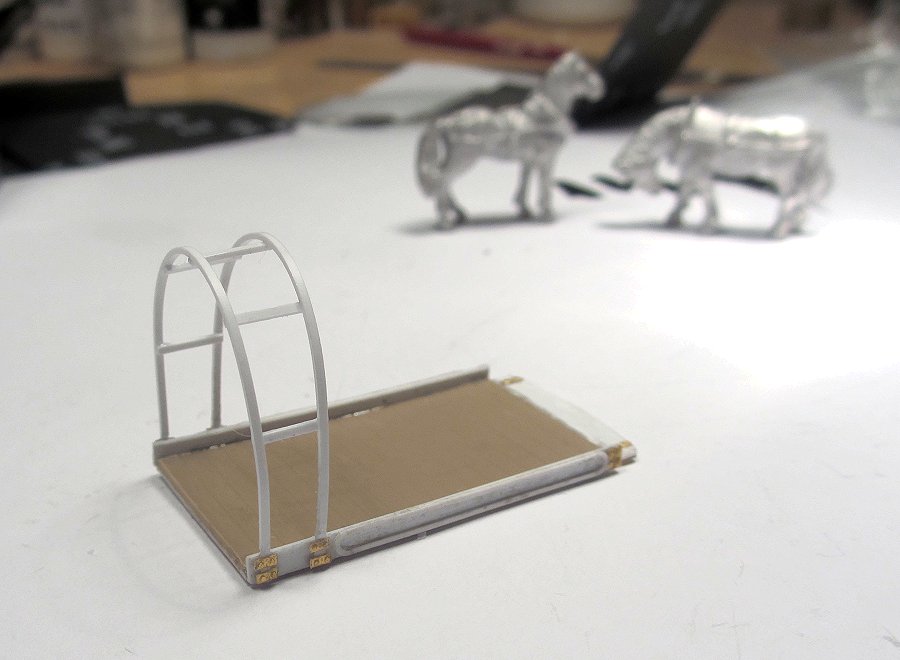
The vehicles had a protective canvas cover over the driver which could be extended backwards over the load in wet weather. The canvas was held by hoops over the seat, which – unlike many other goods delivery vehicles – seem to have been permanently fitted. In typical old-world fashion, these otherwise mundane vehicles had moulded panels along the sides. I fashioned the latter from strips of Evergreen - could've done with a Silhouette cutter there!
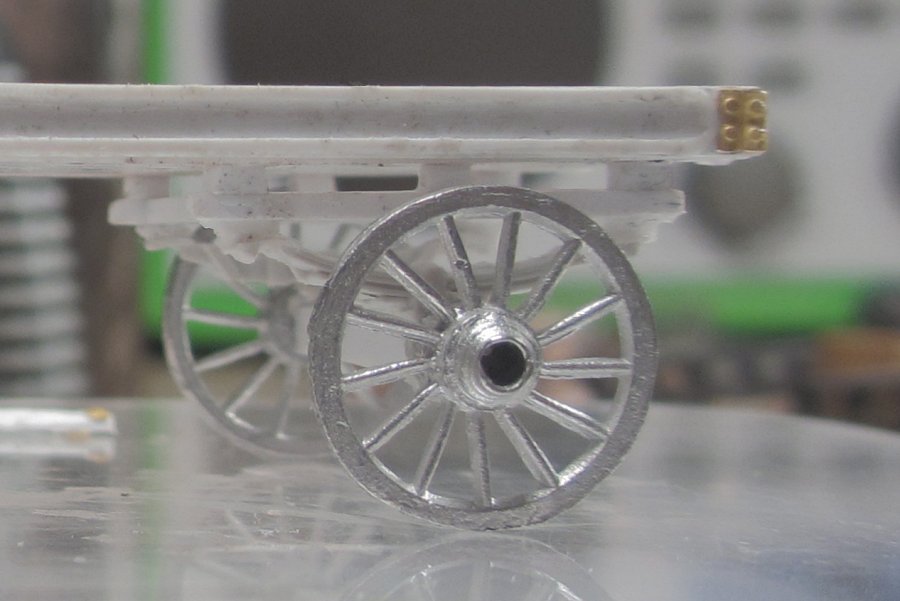
The wheels were a bit of a problem. The closest I could find were Langley’s 12mm wheels. These are 0.9 mm too small and have 11 spokes where they should have 12. In the end I compromised and used them. If I find better wheels I'll replace them. The springs are modified leftovers from Coopercraft wagon kits.
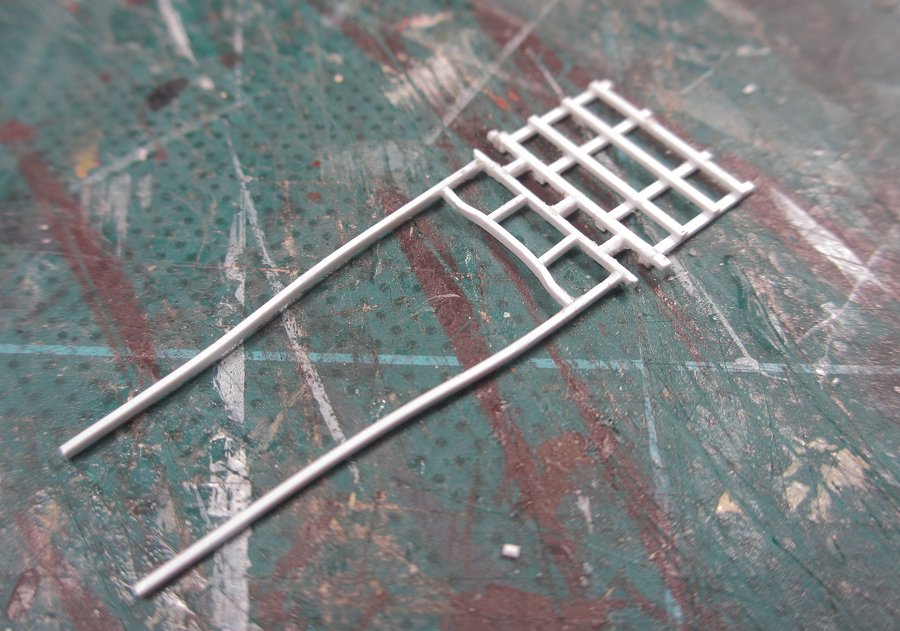
The fore carriage and shafts were a nice little puzzle to build. The drawing does not clearly show the type of shafts used. The GWR used several varieties, with designs becoming simpler over the years. To cut a long story short, I chose the graceful “curvy” style of the earlier types.
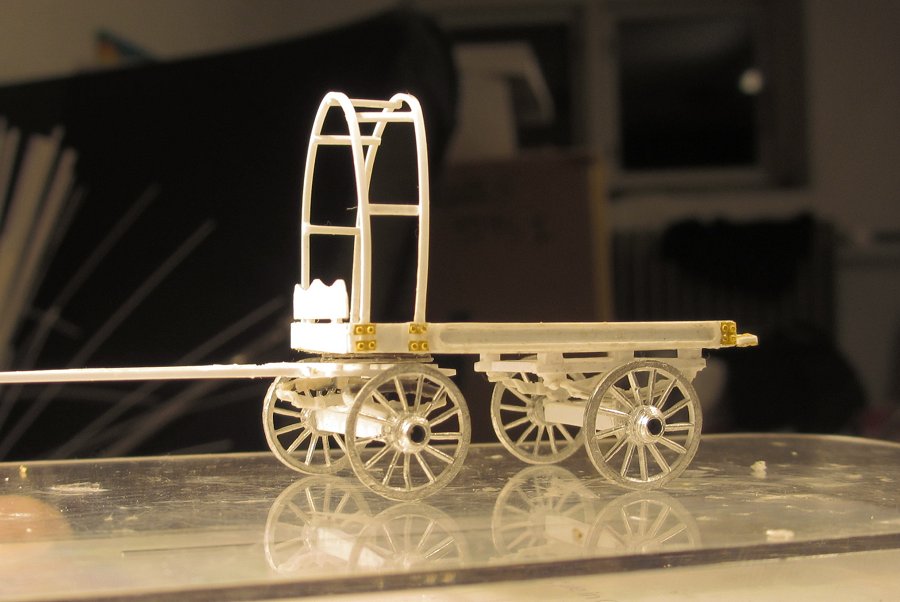
Main parts assembled and ready for painting.

Lettering presented the usual problem when you need non-standard sizes. Photos of trolleys from the 1900s show some with serif lettering, some with sans serifs. Some have numbers at the front, others at the rear. I eventually used HMRS Hawksworth coach lettering (!), which is a compromise but not too far off for sans serif lettering. I've only just noticed the broken spoke - a fault in the casting it seems.
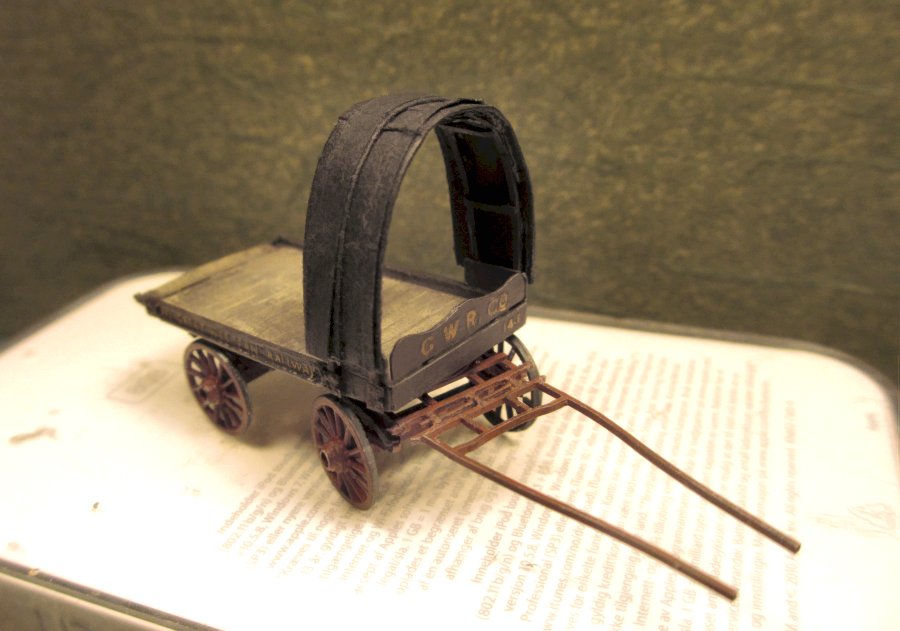
The weather sheet fitted. Again there was variety on the prototypes. On some vehicles the sheet extended all the way down over the sides, on others it stopped short above the deck. The sheet was fashioned from a wagon tarpaulin from the Smiths range, turned over to hide the lettering.

Final detailing included adding a few bits of this fine chain which I've only recently discovered. It is imported by Cambrian Models and has the great advantage of being pre-blackened. It is 33 links per inch, and can be obtained from Cambrian themselves or by internet order from H&A Models (I have no connection to either).

For horse power, I chose the recently introduced "feathered" Vanner from Dart, seen here on the left together with a mate from Shirescenes for comparison. As always with figures, I prefer relaxed/calm poses - and I liked the way the Vanner was bending its head down. The bucket was fashioned from bits in the spares box. Keeping draught horses in good shape was taken very seriously, and photos show them both feeding and drinking while waiting at goods depots (eg here).

So that's about it. It's been interesting to scratchbuild this vehicle and thereby learn about the design of these vehicles. Sometimes doing a small project like this can bring as much satisfaction (and challenge!) as a whole layout, I think.

For a couple of other scratchbuilt GWR horse-drawn vehicles, see Jerry Clifford's lovely little vehicles, and Beachcomber Bob's dray here on RMweb.
-
 13
13



54 Comments
Recommended Comments
Create an account or sign in to comment
You need to be a member in order to leave a comment
Create an account
Sign up for a new account in our community. It's easy!
Register a new accountSign in
Already have an account? Sign in here.
Sign In Now